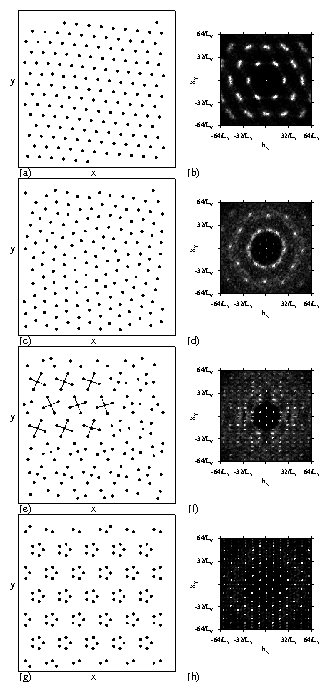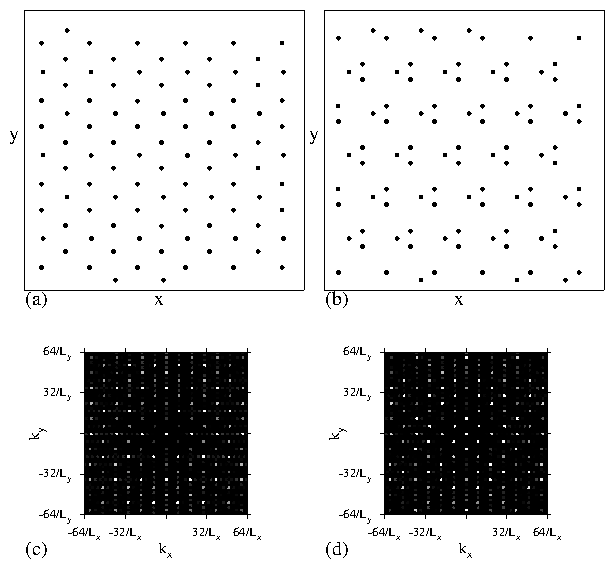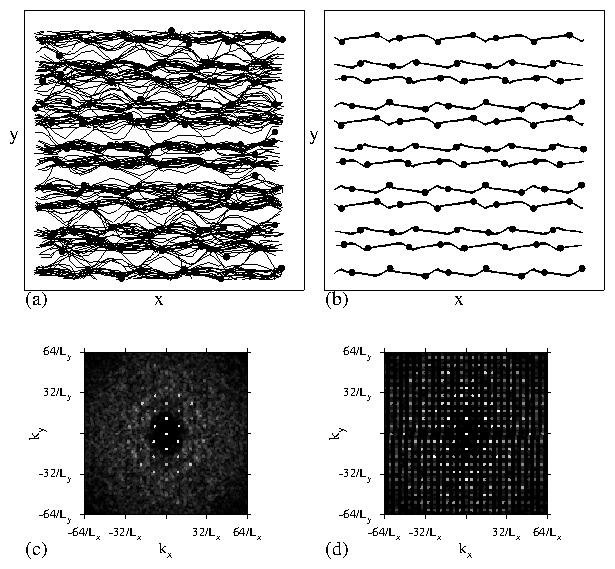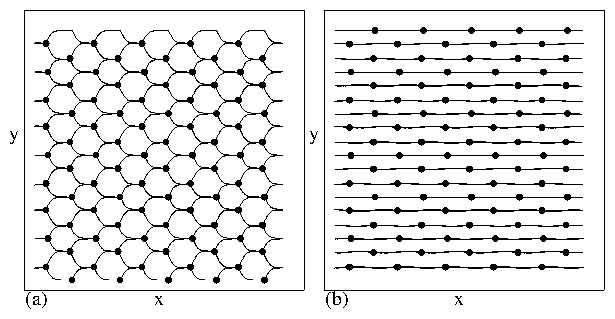 Figure 6:
(a,c,e,g) The particle configurations and
(b,d,f,h) corresponding S(k) for samples with f = 5.
(a,b) At A = 0.5 the particles have triangular ordering that
is not commensurate
with the substrate, as indicated by the smearing of the peaks in S(k).
(c,d) At A = 1.75 the system is disordered.
(e,f) At A = 4.1 the system forms what we term a jack state
with one particle located at the center of each potential minimum
surrounded by four outer particles in a square configuration.
In large regions the squares form a herringbone structure, as indicated
by the dashed lines; however,
some localized disorder is present in the sample.
(g,h)
At A=11.0, an aligned pentagon state with long range orientational order
forms.
For A > 11.0 the same structure persists but the pentagons shrink in size.
Figure 6:
(a,c,e,g) The particle configurations and
(b,d,f,h) corresponding S(k) for samples with f = 5.
(a,b) At A = 0.5 the particles have triangular ordering that
is not commensurate
with the substrate, as indicated by the smearing of the peaks in S(k).
(c,d) At A = 1.75 the system is disordered.
(e,f) At A = 4.1 the system forms what we term a jack state
with one particle located at the center of each potential minimum
surrounded by four outer particles in a square configuration.
In large regions the squares form a herringbone structure, as indicated
by the dashed lines; however,
some localized disorder is present in the sample.
(g,h)
At A=11.0, an aligned pentagon state with long range orientational order
forms.
For A > 11.0 the same structure persists but the pentagons shrink in size.
|




